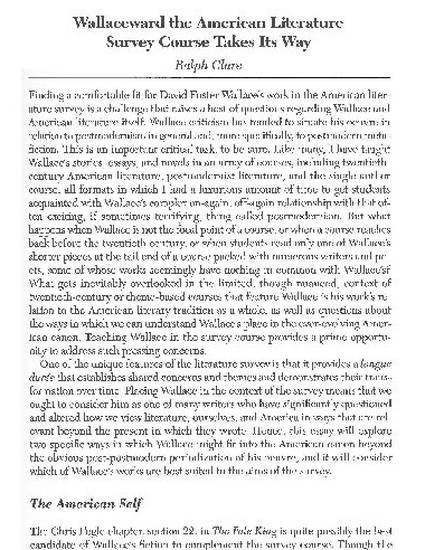
Finding a comfortable fit for David Foster Wallace's work in the American literature survey is a challenge that raises a host of questions regarding Wallace and American literature itself. Wallace criticism has tended to situate his oeuvre in relation to postmodernism in general and, more specifically, to postmodern metafiction. This is an important critical task, to be sure. Like many, I have taught Wallace's stories, essays, and novels in an array of courses, including twentieth-century American literature, postmodernist literature, and the single author course, all formats in which I had a luxurious amount of time to get students acquainted with Wallace's complex on-again, off-again relationship with that often exciting, if sometimes terrifying, thing called postmodernism. But what happens when Wallace is not the focal point of a course, or when a course reaches back before the twentieth century, or when students read only one of Wallace's shorter pieces at the tail end of a course packed with numerous writers and poets, some of whose works seemingly have nothing in common with Wallace's? What gets inevitably overlooked in the limited, though nuanced, context of twentieth-century or theme-based courses that feature Wallace is his work's relation to the American literary tradition as a whole, as well as questions about the ways in which we can understand Wallace's place in the ever-evolving American canon. Teaching Wallace in the survey course provides a prime opportunity to address such pressing concerns.
This document was originally published in Approaches to Teaching the Works of David Foster Wallace by Modern Language Association of America. Copyright restrictions may apply.
Available at: http://works.bepress.com/ralph_clare/44/

Approaches to Teaching the Works of David Foster Wallace is part of the Approaches to Teaching World Literature book series.